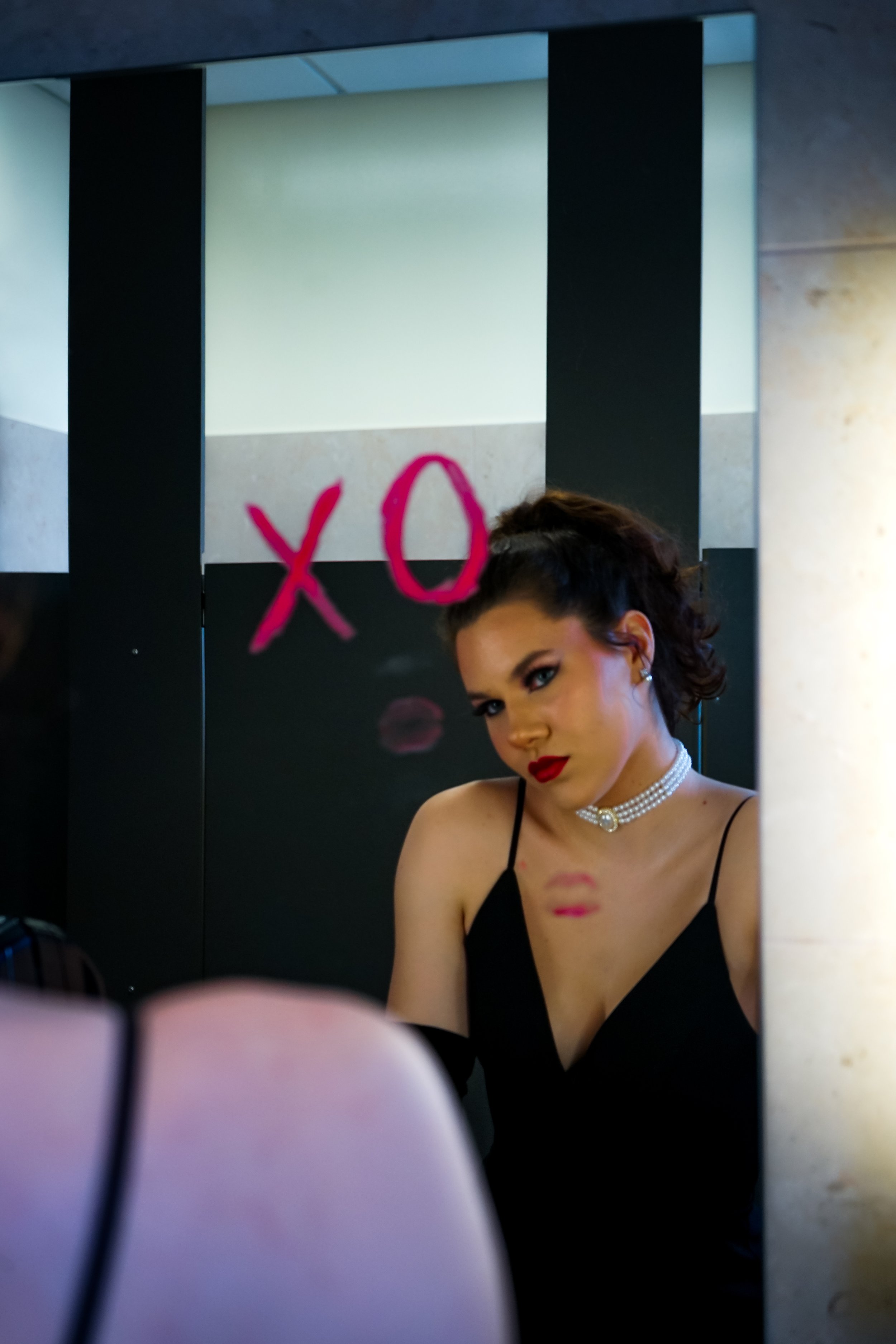Dressing For Revenge
The story behind statement clothing
Written by Katherine Adams, Fashion Staff Writer
Photographed by Abby Cima, Staff Photographer
Modeled by Mara Hansen, Contributing Writer
Multivariate and romanticized, achieving revenge is not always enacted in the literal sense. It is often represented through avenues of expression, such as clothing. In this less-aggressive form of getting even, the focus is not on the wrongdoer but instead on the person who has been wronged, using their stylistic awakening as a proud reminder of what was missed out on. From runaway statements to the iconic Princess Diana black dress, the motif of “dressing for revenge” has inspired a myriad of fashion comebacks.
The message of this fashion arena is not always as negative or violent as the word connotes. Whereas more nefarious ideals inspire truly cruel or hateful clothing, “vicious” fashion is commonly utilized as a multifaceted adjective. Vicious fashion can be inspired by feelings of fierce self-confidence, passionate love or deep pride.
Patriots of this idea can take the form of climate activists, cultural leaders and anyone who is not afraid to be portrayed as the villain for what they see as justified. At its core, vicious fashion embodies what has been overlooked, what has been overcome and what needs to change. It is a coalescence of representations in a subset of fashion that is often and profoundly misrepresented.
Viktor and Rolf’s clothing exposition at 2019 Paris Fashion Week is one of the most notable examples of response-prompting design. The line flaunts almost-gaudy dresses plastered with a series of fiery statements—such as “I am my own muse” and “No photos please”—made to inspire conversation (Samet, 2019). Similarly, the Prabal Gurung collection shown two years prior debuted black and white phrases on many of their models, detailing several feminist, pro-LGBTQ+ and racially proud statements. All of these designers demonstrated a prime instance of fierceness in the form of fashionable activism.
Perhaps more nuanced or influential than runway fashion, the stylistic viciousness of public figures is notable, as well. As history will denote, one of the most popular revenge moments was when newly divorced Princess Diana shocked the world by sporting a black, low-cut Christiana Stambolian gown to defy the royal family's dress code (Ward 2022). Most recently, Taylor Swift embodied that same vengeful spirit by wearing a silver-studded gown to the 2022 VMAs, where she won the same award she did the year rapper Kanye West stole her acceptance speech time from her.
Evidence of renowned clothing statements can also come from a place of cultural confidence or societal defiance. At the 1973 Oscars, Native American activist Sacheen Littlefeather took the stage to announce Marlon Brando’s refusal to accept the award for his performance in The Godfather. She then went on to use the platform to protest the mistreatment of Native Americans in Hollywood (Keeler, 2022). When doing so, Littlefeather wore the traditional dress of her Cherokee heritage, a triumphant message of love for her background against an industry that traditionally used this background as a springboard for spoof-related entertainment (Keeler, 2022).
Using a platform as a way to bring attention to a cause is not unfamiliar to more current activists either. At the 2021 Met Gala, Alexandria Ocasio-Cortez’s statement dress—a gown adorned with a striking political statement about taxing the wealthy—serves as proof that truly impactful vicious fashion comes in the form of societal statements (Gerber, 2021).
Despite high fashion designers and public figures being well-supported poster children of fierce or vengeful style ideas, there are ways to achieve similar looks with one's wardrobe. By sticking to or even discovering personal likes or dislikes, honoring one’s cultural background and dressing unapologetically, each of us can get our vengeance.
Whether originated by runway designers or promoted by public figures, retaliating against problematic systems or people is not as devilish as the media promises. To truly understand the intentions behind each ferocious piece, it’s crucial to know what happens behind the scenes to inspire them. By doing so, one can discover the activism, representation or self-love that motivates these fashions. For each of us, being fashionably vicious comes in the form of dressing for oneself and one’s values without question. By allowing every outfit to take the form of a type of “revenge dress” against what hinders or suppresses us, we can create a future that is just as fiercely our own.
Sources:
Gerber, D. (2021, September 14). Alexandria Ocasio-Cortez's political met Gala Dress has Twitter divided - The Boston Globe. BostonGlobe.com.
Keeler, J. (2022, October 25). Sacheen Littlefeather was a native icon. her sisters say she was an ethnic fraud. San Francisco Chronicle.
Samet, M. (2019, January 23). Designers turn Paris fashion week into a fashion statement, literally. New York Post.
Sardone, A. (2019, November 1). Staying silent is out - fashion activism is in. University of Fashion Blog.
Ward, F. (2022, August 31). Princess Diana's revenge dress: The forgotten stories.




